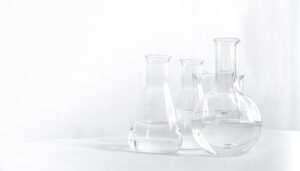DRY ICE SAFETY
Protect yourself and others – READ this FIRST before handling, storing or transporting dry ice.
1 | Handling
Dry ice is extremely cold -109.3°F (-78.5°C). Touching dry ice with unprotected skin can cause freeze burns or even frostbite. DO always use insulated gloves and protective clothing when handling dry ice. Rubber and plastic gloves do not provide enough protection. Protective eyewear is recommended.
2 | Transporting
DO NOT put dry ice in any space that is not well ventilated. When transporting dry ice in a vehicle, open a window in order to ventilate the space and circulate the air to prevent the carbon dioxide (CO2) gas from building up.
3 | Storing
Store dry ice in an insulated container. This will reduce the rate of sublimation (turns from solid form to gas form) and make it last longer. DO NOT store in an airtight container as the sublimation of dry ice to CO2 gas may cause a buildup of gas and the container to burst. NEVER store dry ice unattended or in an area accessible to children and animals.
4 | Using
NEVER leave dry ice unattended. It should always be kept out of the reach of children and animals.
NEVER taste, eat or swallow dry ice. Dry ice can cause serious internal injury if swallowed. If you or someone near you has done so, call 911 immediately. . NEVER put dry ice directly into drinks intended for consumption.
Use in a well-ventilated area. DO NOT lay in the dry ice clouds as they are made of carbon dioxide. (CO2). In small amounts, CO2 is harmless but if inhaled in large amounts, it can lead to shortness or breath or even asphyxiation.
If dry ice is transported, stored or used in a closed area for more than 10 minutes, you must open a door or window to allow adequate ventilation.
5 | Disposing
When finished using dry ice, unwrap it and leave it at room temperature in a well-ventilated area clear of animals or children. Allow any remaining dry ice to sublimate completely in a well ventilated space. NEVER put it in the garbage or down a sink drain or toilet.
IN CASE OF EMERGENCY
For accidental ingestion, seek medical attention immediately and call 911. Panting, headaches and blue lips and fingernails are signs of overexposure to carbon dioxide. If necessary, call 911. Seek medical attention as needed for treatment of dry ice burns.




















